28-29 March 2006 Produced by Internet Home Alliance, a cross-industry network of companies conducting collaborative research in the connected home space, the Collaborative Research Planning Conference is the only digital home conference that gives participants an opportunity to hear the latest connected home research and then work side-by-side with other attendees to develop connected home solution concepts for testing within the Alliance’s collaborative (multi-company) research program. At this spring’s conference, attendees will hear and discuss key learnings from the Alliance’s State of the Connected Home Market Research 2005, the organization’s most comprehensive annual research study into the digital home market. Orlando County Convention Center
Orlando, Florida http://www.internethomealliance.com/events_mkting/industry_conference.asp
Digital-Lifestyles pre-empted and reported thousands of articles on the then-coming impact that technology was to have on all forms of Media. Launched in 2001 as a research blog to aid its founder, Simon Perry, present at IBC 2002, it grew into a wide ranging, multi-author publication that was quoted in many publications globally including the BBC, was described by the Guardian as 'Informative' and also cited in a myriad of tech publications before closing in 2009
Collaborative Research Planning Conference
Endoacustica Spy Mouse
 This is the week when our children’s children will look back and ask “Didn’t they honestly know?” – the week we pass laws enabling State ID cards. And what’s the hottest story of the day? A mouse with a microphone!
This is the week when our children’s children will look back and ask “Didn’t they honestly know?” – the week we pass laws enabling State ID cards. And what’s the hottest story of the day? A mouse with a microphone!The mouse is real. Every story written about it looks like they think it must be a joke; but it isn’t. It has a microphone in it.
 Stick one of these little bugs in your ear, and you’ll be able to hear everything that the mouse user says.
Stick one of these little bugs in your ear, and you’ll be able to hear everything that the mouse user says.Endoacustica makes wireless microphones, and wireless audio receivers to work with them. It’s an Italian-based firm which specialises in spyware; digital bugging devices, spy cellphones, shotgun microphones and even voice changers (so you can make a call and sound like it isn’t you). And of course, counter-measures.
 In the case of the spy mouse, you’re warned. If someone gives you a mouse looking like this, you can obviously tell it’s not a standard Microsoft or Logitech mouse, and adjust your conversation to suit.
In the case of the spy mouse, you’re warned. If someone gives you a mouse looking like this, you can obviously tell it’s not a standard Microsoft or Logitech mouse, and adjust your conversation to suit.In the case of the Government’s ID plans, you’ve also been warned. It’s one thing being relaxed about Tesco building up a database of all your shopping tastes and preferences. It’s quite another to allow the Government to record details of where you go, who you see, and what you spent money on.
Oh, and like the mouse, what the Government is showing us today, may change in appearance as time goes by…
Intel Mac Photoshop Users Face Long Wait
 Frappuccino-supping designers desperate to run Adobe’s high-end Photoshop graphics suite on their shiny new Intel-powered Mac computers are going to be in for a long wait, according to Adobe engineer Scott Byer.
Frappuccino-supping designers desperate to run Adobe’s high-end Photoshop graphics suite on their shiny new Intel-powered Mac computers are going to be in for a long wait, according to Adobe engineer Scott Byer.Writing in a company blog, Byer said that the costs of updating the latest version to run on Intel-powered Mac computers would prove too high, adding, “There’s no limited-cost option for getting most of the performance available on the platform for Photoshop in a short amount of time.”
Byer went on to say that that building a ‘universal binary’ version of Photoshop for OS X on Intel would be “no small task” because Apple’s XCode development tool wasn’t up to the job.
“Apple is doing an amazing job at catching up rapidly, but the truth is we don’t yet have a shipping XCode in hand that handles a large application well,” he said.
 Apple’s switch from PowerPC to Intel chips has forced software vendors to rewrite their code to accommodate the different architecture as the chips don’t share the same ‘language.’
Apple’s switch from PowerPC to Intel chips has forced software vendors to rewrite their code to accommodate the different architecture as the chips don’t share the same ‘language.’To bridge the gap, Apple created the Rosetta technology to translate PowerPC instructions into Intel code, but this interpreter can heavily impact on calculation speeds, with Vnunet claiming that tests running Photoshop on the new Intel Macs have shown the program running at only half the speed of a previous generation PowerPC machine.
With the graphic design sector making up a large chunk of Apple’s user base, the absence of a fully optimised version of the numero uno design application may prove a barrier to professional users switching to Intel Macs.
 Currently, only Apple’s iMac, MacBook Pro and Mac Mini machines are powered by Intel chips, with the iBook and PowerMac machines still using IBM PowerPC chips.
Currently, only Apple’s iMac, MacBook Pro and Mac Mini machines are powered by Intel chips, with the iBook and PowerMac machines still using IBM PowerPC chips.With the current version of Photoshop CS2 being released last April, Intel Macheads may be in for a long wait for CS3, with Adobe’s usual timetable suggesting a projected release date some nine months away.
Finishing on a high note, Byer commented, that it would be “far better to focus on making sure Photoshop CS3 is able to absolutely squeeze every ounce of power out of what I’m sure will be pretty spankin’ Intel-based towers by that point than to do tons of work moving an old code base to new tools”
Google Grabs 75 Percent In UK
 With a leather-gloved stroke of the company white cat, Google’s mastermind cackled loudly as new figures revealed that their plans for UK domination are nearly complete, with almost three out of every four searches in the UK using their search engine.
With a leather-gloved stroke of the company white cat, Google’s mastermind cackled loudly as new figures revealed that their plans for UK domination are nearly complete, with almost three out of every four searches in the UK using their search engine.During February, 2006, Google referred a whopping average of 74.67 percent of all U.K. visitors to other sites on the web – streets ahead of their nearest competitor Yahoo, who could only muster a comparatively feeble 9.3 per cent.
The figures were released by analysis company WebSideStory, who used a fancypants-sounding “statistical barometer” featuring “techno-graphic trends” (weren’t we dancing to that last night?) to reveal Google’s near-total domination of the UK search market.
 It looks like the Brits have taken a particular shine to the San Francisco-based search giant, with February’s search referral stats outperforming Google’s US average for the the month (55.39 percent) and their global average (62.4 percent).
It looks like the Brits have taken a particular shine to the San Francisco-based search giant, with February’s search referral stats outperforming Google’s US average for the the month (55.39 percent) and their global average (62.4 percent).“Even more so in the U.K. than in the U.S., when people think of search, they think of Google,” commented Rand Schulman, Chief Marketing Officer for WebSideStory.
“This has large implications for U.K. marketers, whose search engine marketing and optimization strategies should be Google-centric,” he added.
Looking down to the sorry gang of search engines trailing several laps behind, we can see Yahoo at 9.30 percent, MSN at 5.46 percent, AOL with 4.21 and a coughing, spluttering Ask (Jeeves) with just 2.28 percent.
Hitachi i.
 If the market for flash memory-based MP3 players wasn’t overcrowded enough, big name electronics company Hitachi have decided to steam in with a collection of their own.
If the market for flash memory-based MP3 players wasn’t overcrowded enough, big name electronics company Hitachi have decided to steam in with a collection of their own.As exciting as a wet weekend at an old people’s home in Bognor, Hitachi’s new trio of i.µ (iMuze) players look decidedly underwhelming.
The bar-shaped Hitachi HMP-F3 looks like, well, every other cheapo USB player, with 512MB of flash memory, a dull design, two-colour LCD display and a line-in port.
Also offering 512MB memory is the HMP-D3 player, which at least comes in a vaguely interesting teardrop shape (we’re trying to get a bit excited here, but we haven’t got a lot to work with).
Both players are USB 2.0 compliant with files transferred via Windows Media Player or drag and drop.
 Wrapping up the trio is the HMP-S3, housed in a slightly squashed square form factor and available in yellow or white (you could never accuse the Hitachi designers of being too ambitious with this range).
Wrapping up the trio is the HMP-S3, housed in a slightly squashed square form factor and available in yellow or white (you could never accuse the Hitachi designers of being too ambitious with this range).Offering no on-board memory of its own and only USB 1.1 support, users will have to reach for their SD cards to get a peep out of the thing.
All of the players can knock out MP3, WMA and WAV tunes, there’s support for DRM 9/10 and Hitachi claim a 35 hour battery life.
There doesn’t appear to be anything as interesting as a radio onboard, so unless these players are priced at the bargain basement end of the market, we don’t imagine there’s any prospect of cash till meltdowns taking place.
We haven’t heard word on pricing yet, although the units are expected to start appearing in the shops during in late April.
I reckon we’ll be able to bear the wait on this one.
Lovebytes 2006. Environments
20 – 25 MarchInternational Festival of Digital Art and Media The 10th Lovebytes Festival is happening in Sheffield this weekend! Featuring live music and multi-media performances, film screenings, workshops and exhibitions of new media work from around the world… Live music performances by Francis Dhomont (Canada), Fennesz (Austria), CM von Hauswolff (Sweden) and Aoki Takamasa (Japan). The film programme includes an international array of short films curated in partnership with organisations such as animate! (UK), onedotzero (UK), the UK Film Council and the Japan Media Arts Festival and an exclusive UK preview of David Slade’s feature film Hard Candy. Exhibitions include a specially commissioned three screen video installation by HFR-LAB (UK) and exhibitions of digital video work by Junebum Park (Korea), Julian Oliver (NZ) and Daniel Crooks (Australia). Presentations and workshops include desperate optimists (UK), Richard Fenwick (UK) who will be presenting their work and open source software workshops at Access Space. Sheffield UK http://www.lovebytes.org.uk/2006
MySpace Looks to Build In Europe
 It is being reported that MySpace-owner, News International, is looking to expand its presence in Europe with its focus being London.
It is being reported that MySpace-owner, News International, is looking to expand its presence in Europe with its focus being London.MediaBulletin claims MySpace are opening offices in London, while expanding their connections into the entertainment businesses in the UK capital. They hope to grow the number of UK users beyond the estimated 2m that currently use it.
MySpace considered
Why has it been such a popular thing?It’s a clever, cut down version of what anyone can do on the Web for themselves using separate software tools and service, but it offers the tools in one place. The unkind are calling it GeoCities 2.0, which isn’t too far from the truth.
 Importantly it also has social/network effects built it. This works both for the creators, as they grow their links to their friends – real and imagined; but importantly for MySpace’s income, the network effect for browsers is huge. As a browser looks at the original site, they split off in a myriad of different directions as they distract themselves, exploring the music taste and hobbies of linked friends.
Importantly it also has social/network effects built it. This works both for the creators, as they grow their links to their friends – real and imagined; but importantly for MySpace’s income, the network effect for browsers is huge. As a browser looks at the original site, they split off in a myriad of different directions as they distract themselves, exploring the music taste and hobbies of linked friends.Looking around it is addictive, and engrossing, but it’s ultimately an unrewarding empty experience.
Getting to here
The way MySpace has ended up has been very fortuitous. Whether this is intentional or if it’s due to a number of happy coincidences is unclear.MySpace originally was swamped by children and teenagers when it started two years ago – possibly attracted by its relative safety and that their mates were on it.
 It’s expanded beyond this now and has now reached the point where record companies feel bands _must_ have their own presence on MySpace, even if they’ve got their own Web presence – witness sons of Ventnor, The Bees.
It’s expanded beyond this now and has now reached the point where record companies feel bands _must_ have their own presence on MySpace, even if they’ve got their own Web presence – witness sons of Ventnor, The Bees.The hard-nosed commercial reality is that bands would be foolish not to be on MySpace. With 35m active users is claimed, the potential audience is too huge to ignore.
Here comes the competition
Other companies are well aware of the value of shared spaces like this – their attention focused by the $580m the News International paid for MySpace. This was highlighted by Microsoft spending a fair bit of cash at SXSW try to get the music companies interested in being on MSN Spaces – their looky-likey offering. With the media footprint that News International has, it’s highly likely that they’re going to be able to make best value from what appears to be a considerable purchase price. Already there’s been reports their UK tabloid, The Sun, is to being brought onto MySpace using MySun.
With the media footprint that News International has, it’s highly likely that they’re going to be able to make best value from what appears to be a considerable purchase price. Already there’s been reports their UK tabloid, The Sun, is to being brought onto MySpace using MySun.With the backing of Murdoch, MySpace _will_ become more of people lives than it is now, and they’ve reached such a point of saturation that the likelihood of them being displaced is low, at least in the short term. If reports of expansion are correct, UK and European residents can expect to be hearing a lot more about MySpace.
Online Tools To Help Solve Crosswords
 Do NOT read this report, if you’re fond of crosswords. Don’t say I didn’t warn you.
Do NOT read this report, if you’re fond of crosswords. Don’t say I didn’t warn you.OK, here’s a clue: “It’s a place!”
All you have to go on is the fact that there are three words.
The first is _ e _ _ _ _ _ t _ _ e The second is _ a t _ _ _ a _ And the last is _ a r _
 I was being pig-headed. I only had one guess left, and all I knew besides that was that the letter ‘c’ was not one of those used. And if I got it wrong, it was “game over” while if I got it right, it was a thousand points onto the total.
I was being pig-headed. I only had one guess left, and all I knew besides that was that the letter ‘c’ was not one of those used. And if I got it wrong, it was “game over” while if I got it right, it was a thousand points onto the total.Ah (I thought) if only I could look it up in a crossword setter’s dictionary.
You may not have realised such a thing exists. It’s something a friend of mine had, back in the 70s. And I used to be very impressed by his ability to create crosswords, until he showed me how it was done. You simply look for words indexed by the second letter or the third, rather than the first. Or, the sixth, or the last.
 Believe it or not, until I remembered my friend, it had never occurred to me to wonder where I might find such a dictionary; and of course, as soon as the thought occurred, I found Amo’s Online Crossword Dictionary.
Believe it or not, until I remembered my friend, it had never occurred to me to wonder where I might find such a dictionary; and of course, as soon as the thought occurred, I found Amo’s Online Crossword Dictionary.From that I quickly got “park” as the plausible last word. The middle word looked like a choice between “waterway” and “national”.
Waterway Park? Nah. And “national park” – yes! – which instantly triggered “Yellowstone! – of course!”
 I’ll be interested to see if this means I never do crosswords again, or whether I now do them more frequently. Amo’s is bad enough, but One Across is even worse… so the temptation to cheat will be so hard! – and before Google, it simply wasn’t there. Welcome to the digital world where (as they used to say) “in a land without fences, who needs Gates?”
I’ll be interested to see if this means I never do crosswords again, or whether I now do them more frequently. Amo’s is bad enough, but One Across is even worse… so the temptation to cheat will be so hard! – and before Google, it simply wasn’t there. Welcome to the digital world where (as they used to say) “in a land without fences, who needs Gates?”Only the guardian of the Garden of Innocence needs a gate; and once you’re throught it, can you ever go back. Unless, of course, the server is down.
Next challenge: “?eu?i??” – something that would have stumped me for hours yesterday. Today, I find myself saying “Challenge? What challenge?” Not a bit hard, is it?
RFID: Government Too Shambolic To Spy
 The “wireless tag” business isn’t just for tracking prisoners out on probation: it’s also for tagging holidaymakers and train travellers.
The “wireless tag” business isn’t just for tracking prisoners out on probation: it’s also for tagging holidaymakers and train travellers.So the news that you can hack a computer system by embedding a virus into an RFID tag wasn’t welcome in RFID circles, and the news that people at Great Wolf Resorts are tagging themselves on purpose, was, very welcome, indeed.
The problem with RFID tags is unlikely to be hacking. The exploit, unveiled by Dutch researchers, worked. Researchers at the science faculty of the Free University of Amsterdam put unexpected data into a tag, which caused a buffer over-run when the system read it.
The RFID industry responded with some optimistic explanations of why it won’t work in real life, including the suggestion that “some tags aren’t rewriteable, so it can’t happen” and (more impressively) “a well designed system would trap that hack.”
The idea that an RFID scanning system would be safe if it expected only permanent tags, is exactly the problem that the Dutch researchers were exposing, of course. The true tag may be read-only; but there’s nothing to stop a hacker producing a phoney tag that matches the signature of the real one. And the problem is exactly the expectation of the system designer. A complacent designer says: “There’s no way these tags can compromise the system, therefore we don’t have to set checks” while the competent designer says: “Who knows what random data might get in? – let’s design this system to be secure!”
 Now that the theoretical insecurity is exposed, says AIM Global (the industry body that promotes RFID), systems will be secure. That sounds right.
Now that the theoretical insecurity is exposed, says AIM Global (the industry body that promotes RFID), systems will be secure. That sounds right.But the problem with RFID isn’t what most people think. All sorts of scare stories have been printed, based on the idea that if you have an RFID tag, someone can track you as you move around the city.
This story comes from the way the tags work. They have no power, these tags; instead, they are activated by a coil, picking up power from the activator. Most people in London will be familiar with these: the entrance to every Tube station now has the yellow Oyster “touch in, touch out” sensor, which activates the tag in your card, and updates it.
The theory is that the tag will only get enough power to start transmitting if it is within a couple of centimetres of the activator. However, it’s been shown that you can use a focused beam to trigger the tag from a considerable distance – several metres, for sure, and perhaps several dozen metres.
Equally, you can read them from further away than the spec suggests. All you need is a particularly sensitive receiver.
 The risk to civil liberties may be imaginary, as you can quickly see from the trouble prison officials are having with tagging of criminals. Putting a tag on someone’s wrist or ankle is easy enough, but reading it requires two essential steps. First, the tag has to be there (people have been merrily removing their tags so as to go out to the pub after curfew!) and next, it has to be unshielded. A simple aluminium foil shield around the tag, and it becomes invisible.
The risk to civil liberties may be imaginary, as you can quickly see from the trouble prison officials are having with tagging of criminals. Putting a tag on someone’s wrist or ankle is easy enough, but reading it requires two essential steps. First, the tag has to be there (people have been merrily removing their tags so as to go out to the pub after curfew!) and next, it has to be unshielded. A simple aluminium foil shield around the tag, and it becomes invisible.The Grand Wolf tags work on the assumption that people want to be tagged in and out of the holiday centre, so that they don’t have to be searched. Try using the same technology for tracking a prisoner on probation, and the system quickly falls apart.
 What would work, would be a system which constantly monitored where the tag was, and was embedded into the skin (as with Professor Kevin “Cyborg” Warwick of Reading University, who wore a dog tag for a week) or into a tooth – so that if the user shielded it, it would instantly vanish from the map, causing an alarm. It would work – but it would require thousands and thousands of activators, all working at long distance, everywhere the user was likely to go.
What would work, would be a system which constantly monitored where the tag was, and was embedded into the skin (as with Professor Kevin “Cyborg” Warwick of Reading University, who wore a dog tag for a week) or into a tooth – so that if the user shielded it, it would instantly vanish from the map, causing an alarm. It would work – but it would require thousands and thousands of activators, all working at long distance, everywhere the user was likely to go. The Oyster system for London Underground is to be extended so that it works on UK railways generally. That will show where the real problems are – and as any Oyster user will tell you, they are already baffling Transport For London. Travellers find that their cards beep at them as they go through the gates, saying “Seek Assistance!” – but when they present them at the ticket office, the staff say “Nothing wrong, go away.”
The Oyster system for London Underground is to be extended so that it works on UK railways generally. That will show where the real problems are – and as any Oyster user will tell you, they are already baffling Transport For London. Travellers find that their cards beep at them as they go through the gates, saying “Seek Assistance!” – but when they present them at the ticket office, the staff say “Nothing wrong, go away.”Clearly, there is something wrong. Clearly, the complexity of the system is too great for unskilled staff to diagnose faults. That’s where RFID opponents ought to focus their concerns – not on imaginary Sci-Fi scenarios with Big Brother spies and dog-tags under the skin, but on simple systems management.
Usability is far harder to get right than people think.
LG-SD910 Duo Slide Design Mobile Handset
 LG have announced a unique new phone, the LG-SD910, featuring what the Korean manufacturing giants are describing as a ‘Duo Slide Design.’
LG have announced a unique new phone, the LG-SD910, featuring what the Korean manufacturing giants are describing as a ‘Duo Slide Design.’More twisty than Houdini in a rubber suit on a oily mat, LG’s Duo Slide technology involves a conventional slide-out numerical keypad, with the addition of a nifty horizontally sliding screen.
Shunting the screen a few centimetres to the left reveals a thin strip of multimedia controls, presumably all the better for viewing the screen in landscape format – although the usual totty-clutching photo shows the thing being used in portrait format (we’re deep in Babelfish territory here, so bear with us).
 Looking a bit of a moody number in its all-black skin and glowing red buttons, the LG-SD910 sports a large 260k colour QVGA* TFT LCD screen (*that’s 320 x 240 pixels in English).
Looking a bit of a moody number in its all-black skin and glowing red buttons, the LG-SD910 sports a large 260k colour QVGA* TFT LCD screen (*that’s 320 x 240 pixels in English).Multimedia is taken care of with a built in 1.3MP camera (with flash) and an onboard MP3 player, with MBank options for payments.
Battery life looks more than ample with 95-270 hours standby and a talk time of 200 minutes
 Despite its unusual construction and feature set, when all the slidey bits are tucked in the LG-SD910’s a surprisingly compact gizmo, measuring a pocketable 87 x 44 x 23 mm and weighing in at 90g.
Despite its unusual construction and feature set, when all the slidey bits are tucked in the LG-SD910’s a surprisingly compact gizmo, measuring a pocketable 87 x 44 x 23 mm and weighing in at 90g.Naturally, we’re big fans of anything that lights up, swivels, slides out or performs a bit of hi-tech wizardry, but when we see all those moving parts we can’t help wondering how quickly they will break or get bits of pasty stuck in them.
Still, with a SK-Telecom, Korea-only release so far announced, we may never get to find out.
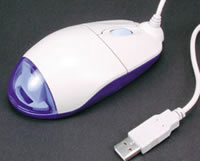 This is the week when our children’s children will look back and ask “Didn’t they honestly know?” – the week we pass laws enabling State ID cards. And what’s the hottest story of the day? A mouse with a microphone!
This is the week when our children’s children will look back and ask “Didn’t they honestly know?” – the week we pass laws enabling State ID cards. And what’s the hottest story of the day? A mouse with a microphone! Stick one of these little bugs in your ear, and you’ll be able to hear everything that the mouse user says.
Stick one of these little bugs in your ear, and you’ll be able to hear everything that the mouse user says.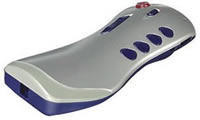 In the case of the spy mouse, you’re warned. If someone gives you a mouse looking like this, you can obviously tell it’s not a standard Microsoft or Logitech mouse, and adjust your conversation to suit.
In the case of the spy mouse, you’re warned. If someone gives you a mouse looking like this, you can obviously tell it’s not a standard Microsoft or Logitech mouse, and adjust your conversation to suit. Frappuccino-supping designers desperate to run Adobe’s high-end Photoshop graphics suite on their shiny new Intel-powered Mac computers are going to be in for a long wait, according to Adobe engineer Scott Byer.
Frappuccino-supping designers desperate to run Adobe’s high-end Photoshop graphics suite on their shiny new Intel-powered Mac computers are going to be in for a long wait, according to Adobe engineer Scott Byer. Apple’s switch from PowerPC to Intel chips has forced software vendors to rewrite their code to accommodate the different architecture as the chips don’t share the same ‘language.’
Apple’s switch from PowerPC to Intel chips has forced software vendors to rewrite their code to accommodate the different architecture as the chips don’t share the same ‘language.’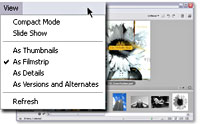 Currently, only Apple’s iMac, MacBook Pro and Mac Mini machines are powered by Intel chips, with the iBook and PowerMac machines still using IBM PowerPC chips.
Currently, only Apple’s iMac, MacBook Pro and Mac Mini machines are powered by Intel chips, with the iBook and PowerMac machines still using IBM PowerPC chips. With a leather-gloved stroke of the company white cat, Google’s mastermind cackled loudly as new figures revealed that their plans for UK domination are nearly complete, with almost three out of every four searches in the UK using their search engine.
With a leather-gloved stroke of the company white cat, Google’s mastermind cackled loudly as new figures revealed that their plans for UK domination are nearly complete, with almost three out of every four searches in the UK using their search engine. It looks like the Brits have taken a particular shine to the San Francisco-based search giant, with February’s search referral stats outperforming Google’s US average for the the month (55.39 percent) and their global average (62.4 percent).
It looks like the Brits have taken a particular shine to the San Francisco-based search giant, with February’s search referral stats outperforming Google’s US average for the the month (55.39 percent) and their global average (62.4 percent). If the market for flash memory-based MP3 players wasn’t overcrowded enough, big name electronics company Hitachi have decided to steam in with a collection of their own.
If the market for flash memory-based MP3 players wasn’t overcrowded enough, big name electronics company Hitachi have decided to steam in with a collection of their own. Wrapping up the trio is the HMP-S3, housed in a slightly squashed square form factor and available in yellow or white (you could never accuse the Hitachi designers of being too ambitious with this range).
Wrapping up the trio is the HMP-S3, housed in a slightly squashed square form factor and available in yellow or white (you could never accuse the Hitachi designers of being too ambitious with this range).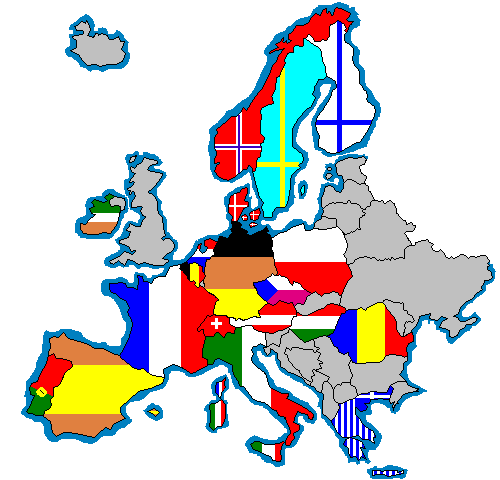 It is being reported that MySpace-owner, News International, is looking to expand its presence in Europe with its focus being London.
It is being reported that MySpace-owner, News International, is looking to expand its presence in Europe with its focus being London. Importantly it also has social/network effects built it. This works both for the creators, as they grow their links to their friends – real and imagined; but importantly for MySpace’s income, the network effect for browsers is huge. As a browser looks at the original site, they split off in a myriad of different directions as they distract themselves, exploring the music taste and hobbies of linked friends.
Importantly it also has social/network effects built it. This works both for the creators, as they grow their links to their friends – real and imagined; but importantly for MySpace’s income, the network effect for browsers is huge. As a browser looks at the original site, they split off in a myriad of different directions as they distract themselves, exploring the music taste and hobbies of linked friends.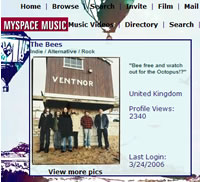 It’s expanded beyond this now and has now reached the point where record companies feel bands _must_ have their own presence on MySpace, even if they’ve got their own Web presence – witness sons of Ventnor,
It’s expanded beyond this now and has now reached the point where record companies feel bands _must_ have their own presence on MySpace, even if they’ve got their own Web presence – witness sons of Ventnor,  With the media footprint that News International has, it’s highly likely that they’re going to be able to make best value from what appears to be a considerable purchase price. Already there’s been reports their
With the media footprint that News International has, it’s highly likely that they’re going to be able to make best value from what appears to be a considerable purchase price. Already there’s been reports their  Do NOT read this report, if you’re fond of crosswords. Don’t say I didn’t warn you.
Do NOT read this report, if you’re fond of crosswords. Don’t say I didn’t warn you. I was being pig-headed. I only had one guess left, and all I knew besides that was that the letter ‘c’ was not one of those used. And if I got it wrong, it was “game over” while if I got it right, it was a thousand points onto the total.
I was being pig-headed. I only had one guess left, and all I knew besides that was that the letter ‘c’ was not one of those used. And if I got it wrong, it was “game over” while if I got it right, it was a thousand points onto the total. I’ll be interested to see if this means I never do crosswords again, or whether I now do them more frequently. Amo’s is bad enough, but
I’ll be interested to see if this means I never do crosswords again, or whether I now do them more frequently. Amo’s is bad enough, but  The “wireless tag” business isn’t just for tracking prisoners out on probation: it’s also for tagging holidaymakers and train travellers.
The “wireless tag” business isn’t just for tracking prisoners out on probation: it’s also for tagging holidaymakers and train travellers. Now that the theoretical insecurity is exposed, says AIM Global (the industry body that promotes RFID), systems will be secure. That sounds right.
Now that the theoretical insecurity is exposed, says AIM Global (the industry body that promotes RFID), systems will be secure. That sounds right. The risk to civil liberties may be imaginary, as you can quickly see from the trouble prison officials are having with tagging of criminals. Putting a tag on someone’s wrist or ankle is easy enough, but reading it requires two essential steps. First, the tag has to be there (people have been merrily removing their tags so as to go out to the pub after curfew!) and next, it has to be unshielded. A simple aluminium foil shield around the tag, and it becomes invisible.
The risk to civil liberties may be imaginary, as you can quickly see from the trouble prison officials are having with tagging of criminals. Putting a tag on someone’s wrist or ankle is easy enough, but reading it requires two essential steps. First, the tag has to be there (people have been merrily removing their tags so as to go out to the pub after curfew!) and next, it has to be unshielded. A simple aluminium foil shield around the tag, and it becomes invisible. What would work, would be a system which constantly monitored where the tag was, and was embedded into the skin (as with Professor Kevin “Cyborg” Warwick of Reading University, who wore a dog tag for a week) or into a
What would work, would be a system which constantly monitored where the tag was, and was embedded into the skin (as with Professor Kevin “Cyborg” Warwick of Reading University, who wore a dog tag for a week) or into a  The Oyster system for London Underground is to be extended so that it works on UK railways generally. That will show where the real problems are – and as any Oyster user will tell you, they are already baffling Transport For London. Travellers find that their cards beep at them as they go through the gates, saying “Seek Assistance!” – but when they present them at the ticket office, the staff say “Nothing wrong, go away.”
The Oyster system for London Underground is to be extended so that it works on UK railways generally. That will show where the real problems are – and as any Oyster user will tell you, they are already baffling Transport For London. Travellers find that their cards beep at them as they go through the gates, saying “Seek Assistance!” – but when they present them at the ticket office, the staff say “Nothing wrong, go away.” LG have announced a unique new phone, the LG-SD910, featuring what the Korean manufacturing giants are describing as a ‘Duo Slide Design.’
LG have announced a unique new phone, the LG-SD910, featuring what the Korean manufacturing giants are describing as a ‘Duo Slide Design.’ Looking a bit of a moody number in its all-black skin and glowing red buttons, the LG-SD910 sports a large 260k colour QVGA* TFT LCD screen (*that’s 320 x 240 pixels in English).
Looking a bit of a moody number in its all-black skin and glowing red buttons, the LG-SD910 sports a large 260k colour QVGA* TFT LCD screen (*that’s 320 x 240 pixels in English). Despite its unusual construction and feature set, when all the slidey bits are tucked in the LG-SD910’s a surprisingly compact gizmo, measuring a pocketable 87 x 44 x 23 mm and weighing in at 90g.
Despite its unusual construction and feature set, when all the slidey bits are tucked in the LG-SD910’s a surprisingly compact gizmo, measuring a pocketable 87 x 44 x 23 mm and weighing in at 90g.